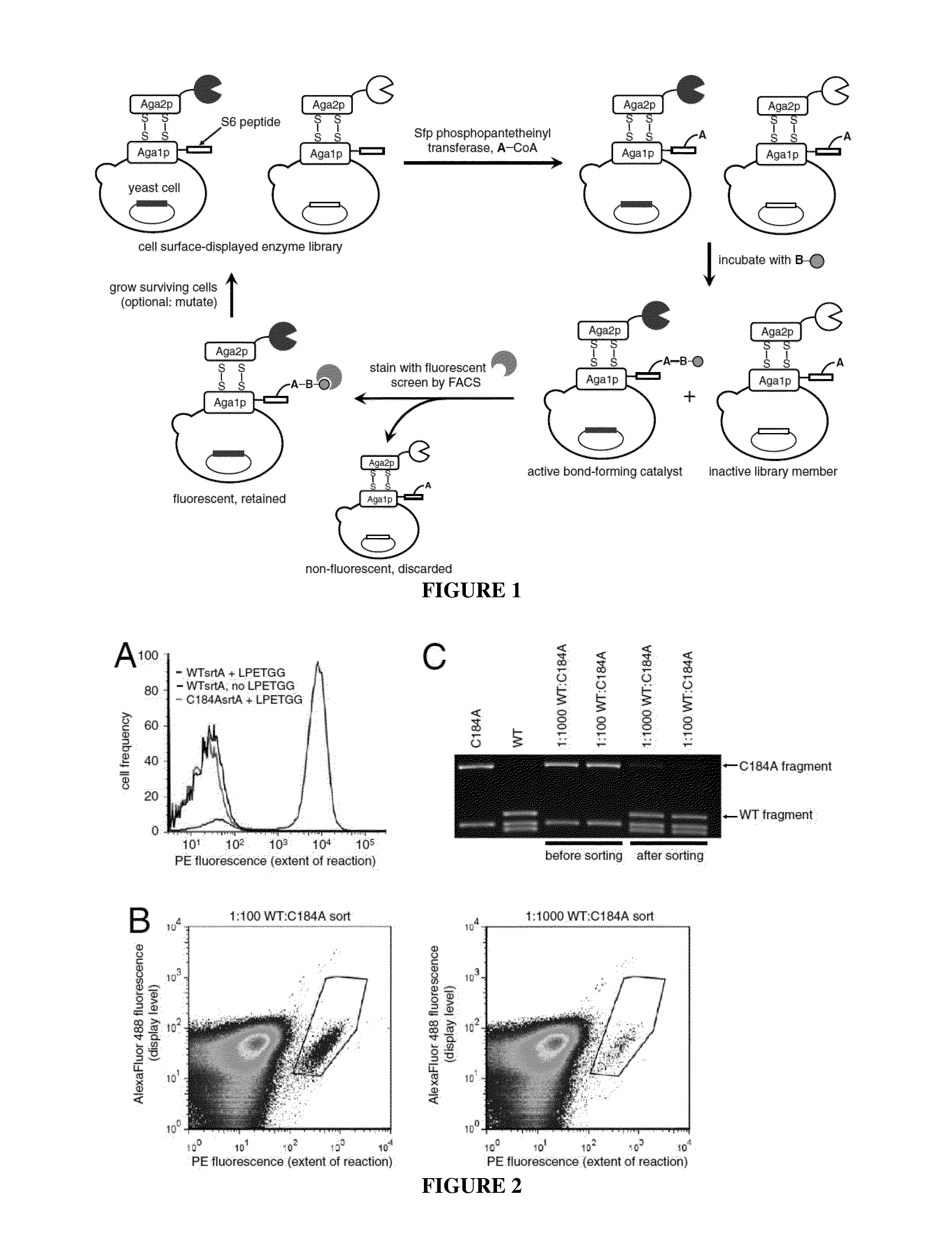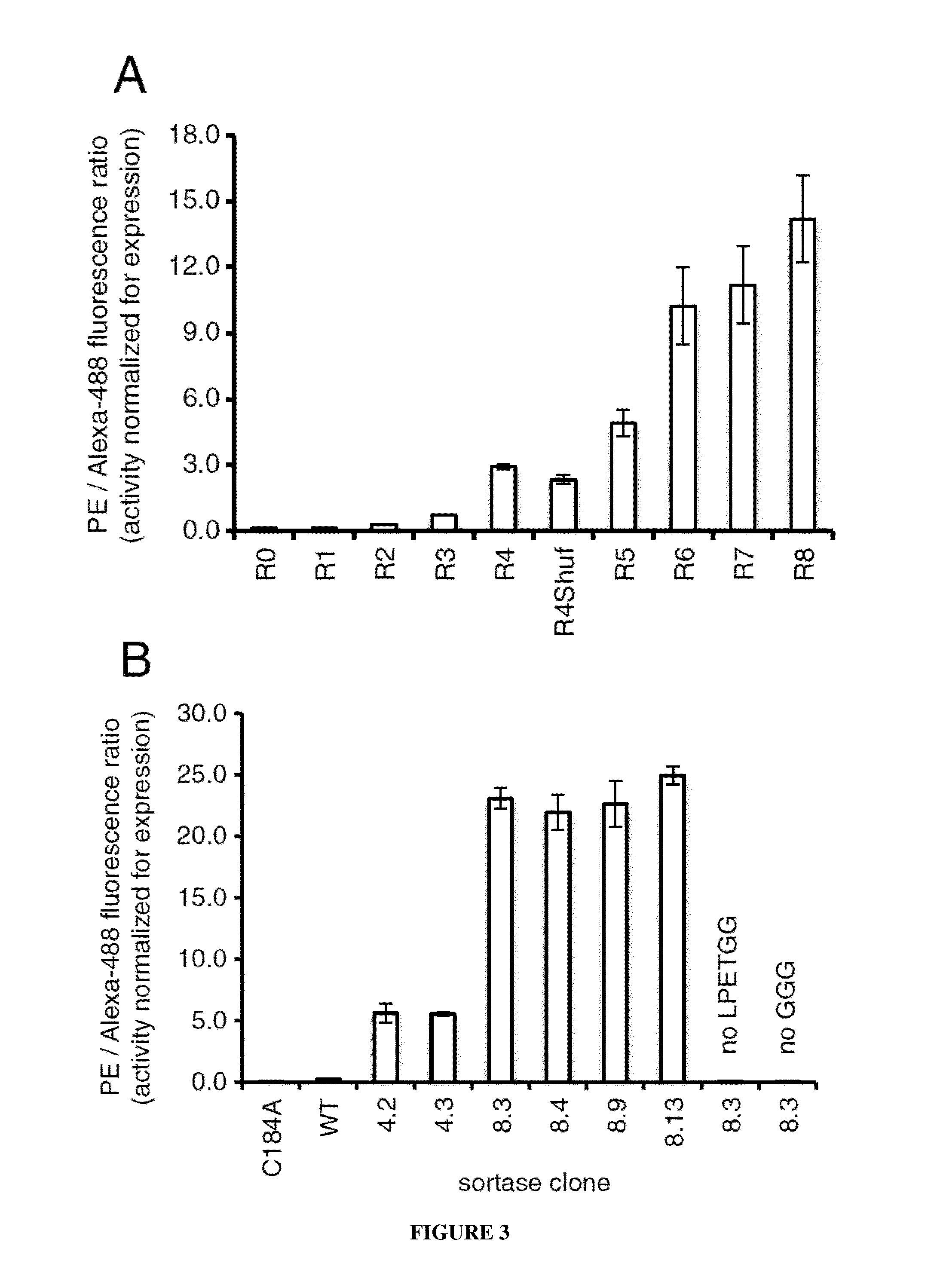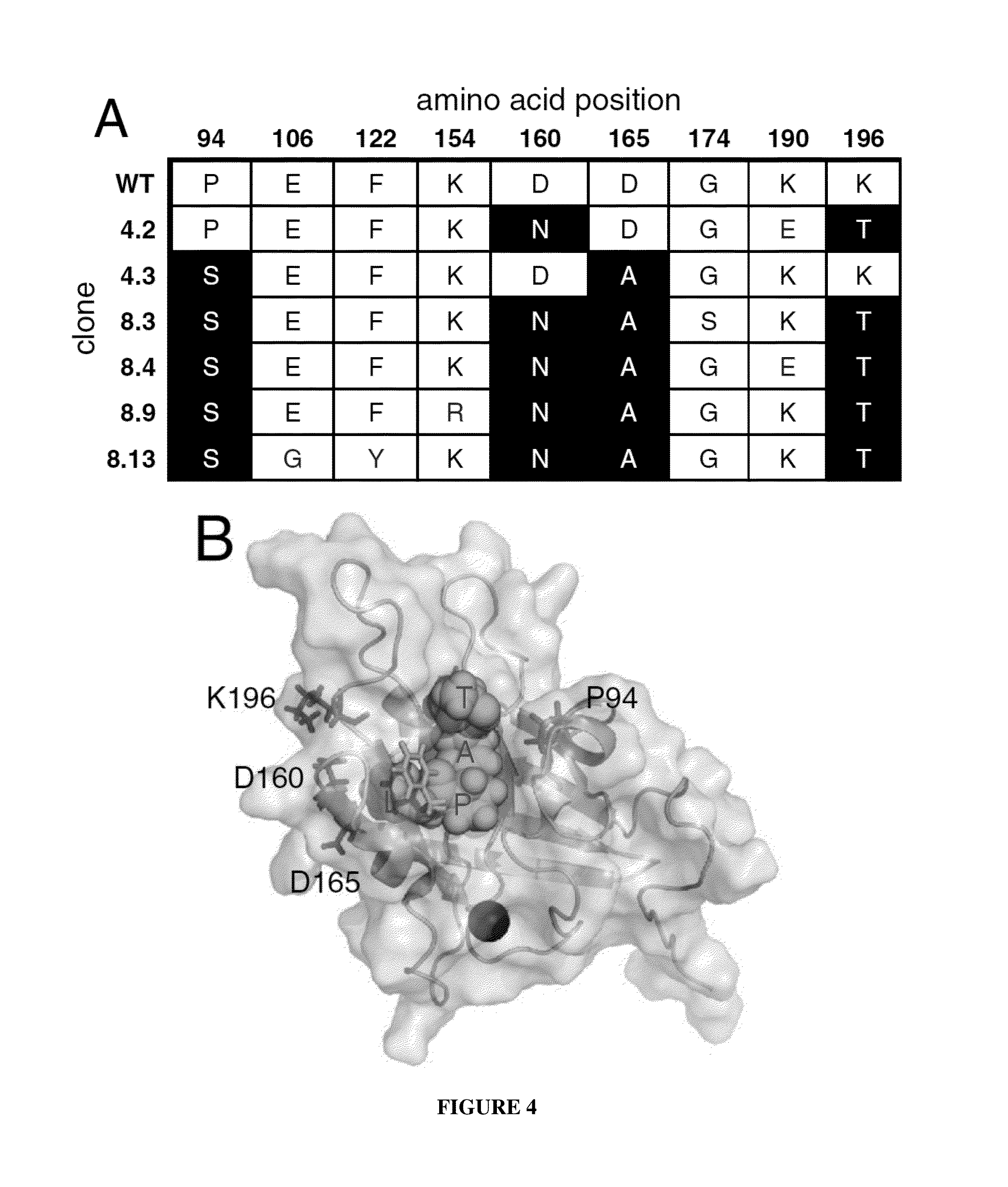Evolution of bond-forming enzymes
- Summary
- Abstract
- Description
- Claims
- Application Information
AI Technical Summary
Benefits of technology
Problems solved by technology
Method used
Image
Examples
examples
Materials and Methods
Sortase Evolution.
[0076]A library of 7.8×107 mutant sortase genes containing an average of 2.0 amino acid changes per gene was introduced into yeast cells using gap repair homologous recombination (see below for details on library construction). In Round 1, 6×108 sortase library-expressing cells were conjugated to GGGK-CoA (SEQ ID NO: 35), incubated with 100 μM biotin-LPETGS (SEQ ID NO: 36) for 60 minutes, and stained with streptavidin-PE and an AlexaFluor488-conjugated anti-HA antibody (Invitrogen). The top 1.4% of the PE / AlexaFluor488 double-positive population were isolated and grown to saturation. At least a tenfold excess of cells relative to the number of cells recovered from sorting were removed, pelleted, and induced to display enzymes at the cell surface with galactose before entering the subsequent round of sorting. See FIG. 11 for details on screening stringency. Following round 4, the surviving sortase genes were amplified by PCR and shuffled using t...
PUM
| Property | Measurement | Unit |
|---|---|---|
| Fraction | aaaaa | aaaaa |
| Fraction | aaaaa | aaaaa |
| Fraction | aaaaa | aaaaa |
Abstract
Description
Claims
Application Information
 Login to View More
Login to View More - R&D
- Intellectual Property
- Life Sciences
- Materials
- Tech Scout
- Unparalleled Data Quality
- Higher Quality Content
- 60% Fewer Hallucinations
Browse by: Latest US Patents, China's latest patents, Technical Efficacy Thesaurus, Application Domain, Technology Topic, Popular Technical Reports.
© 2025 PatSnap. All rights reserved.Legal|Privacy policy|Modern Slavery Act Transparency Statement|Sitemap|About US| Contact US: help@patsnap.com



